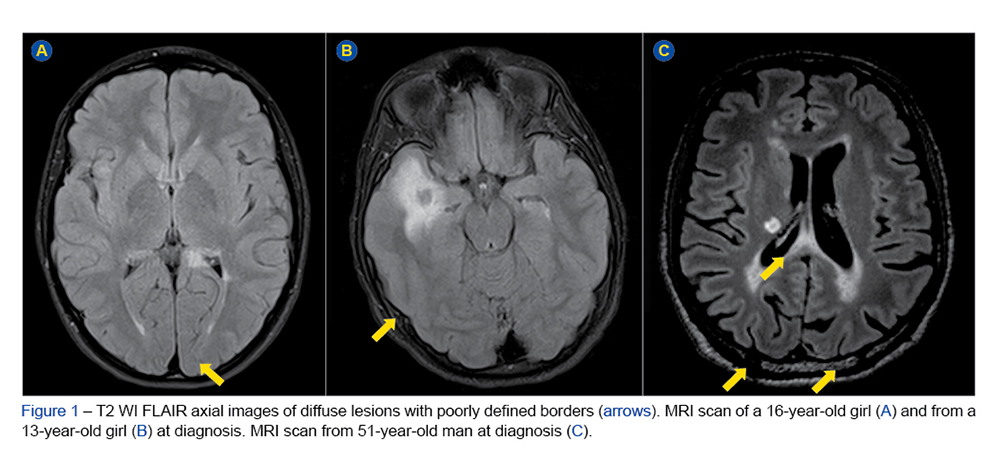SOCIAL MEDIA
Portuguese Medical Association's Scientific Journal

Introduction: Pediatric-onset multiple sclerosis may contrast with adult-onset multiple sclerosis, in terms of disease activity. We aimed to determine differentiating features between pediatric-onset multiple sclerosis and adult-onset multiple sclerosis, at diagnosis and after one year under disease modifying therapies, and analyse the attainment of the status of “No Evidence of Disease Activity” between groups.
Material and Methods: We analyzed demographical, laboratory, clinical and imaging features of patients with relapsing-remitting multiple sclerosis diagnosed at our center, according to the McDonald’s 2010 criteria, with ≥ 1 year under disease modifying therapies and with available magnetic resonance imaging scans at diagnosis and one year after disease modifying therapies initiation. Patients were paired according to gender and disease modifying therapies in use. “No Evidence of Disease Activity” status was assessed, and differences were studied.
Results: Fifteen pediatric-onset multiple sclerosis (aged ≥ 8 and < 18 years) and 15 adult-onset multiple sclerosis (≥ 18 and < 55 years) patients were recruited. We found a statistically significant difference in the number of T2 weighted image diffuse lesions/with poorly defined borders (p = 0.015). The mean expanded disability status scale score after one year under disease modifying therapies was lower in the pediatric-onset multiple sclerosis group (1.6 ± 0.8) compared to the adult-onset multiple sclerosis group (2.3 ± 0.8; p = 0.032). Nevertheless, no differences were found regarding the percentage of cases achieving “No Evidence of Disease Activity” in either group.
Discussion: Although there is an empirical impression about the difference in inflammatory activity between pediatric-onset multiple sclerosis and adult-onset multiple sclerosis, it was not possible to corroborate it in our study. Nevertheless, this was an exploratory and retrospective analysis of a small sample of patients, identifying variables in which such differences appear to be most important.
Conclusion: Extensive studies of children, adolescents and adults with multiple sclerosis will be needed to categorize the clinical and radiological differences that allow the identification of drug response biomarkers in the early stages of the disease.